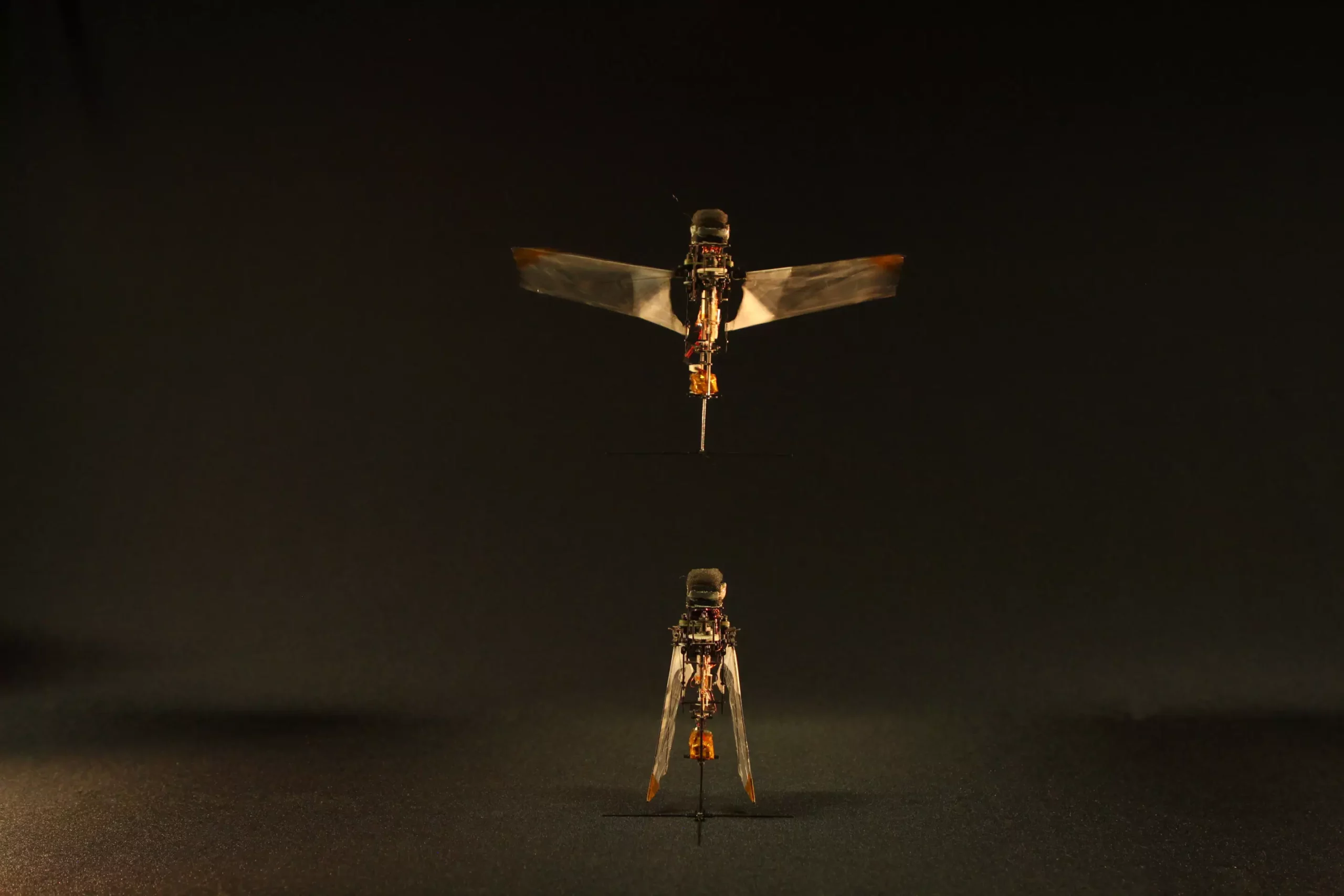The wing dynamics of flying animal species, such as birds, bats, and insects, have long been a source of inspiration for the development of flying robots. While the muscle-driven wing flapping of birds and bats is well understood, the mechanisms behind the wing movements of many insects, particularly herbivorous species like rhinoceros beetles, have remained elusive. Recent research by a team from Ecole Polytechnique Fédérale de Lausanne (EPFL) and Konkuk University sought to uncover how rhinoceros beetles deploy and retract their wings, leading to the development of a novel flapping microrobot.
In their study, researchers discovered that rhinoceros beetles possess a passive wing deployment mechanism, unlike the muscle-driven movements seen in birds and bats. The hindwings of beetles are akin to foldable origami structures, allowing them to be neatly stored under the elytra while at rest and passively deployed during flight. This unique mechanism, observed by lead author Hoang-Vu Phan, inspired the development of a flapping microrobot that mimics this passive deployment process.
By leveraging the insights gained from studying rhinoceros beetles, researchers engineered a flapping microrobot that can passively deploy and retract its wings without the need for extensive actuators. The microrobot, weighing 18 grams and larger than an actual beetle, utilizes elastic tendons at the armpits to enable passive wing folding. Through the activation of flapping motion, the robot can effortlessly deploy its wings to take off and maintain stable flight, showcasing the potential of passive mechanisms in microrobotics.
The development of flapping microrobots with foldable wings opens up a myriad of applications, ranging from search and rescue missions in confined spaces to biomechanical studies of insect flight. The microrobot’s ability to switch between flight and crawling modes allows for versatile exploration in environments inaccessible to traditional rotary-wing drones. Additionally, the low-flapping frequency of the robot makes it safe and user-friendly for educational and engineering purposes, presenting a novel approach to engineering research and outreach activities.
The promising outcomes of preliminary tests conducted on the flapping microrobot pave the way for future advancements in passive wing deployment mechanisms. Further studies could delve into the passive strategies employed by other insect species, potentially uncovering similar mechanisms in tiny flies with limited muscle availability. The evolution-inspired approach to flapping microrobot design not only showcases the ingenuity of nature but also underscores the limitless potential for biomimetic engineering in the field of robotics.
The intersection of entomology, robotics, and engineering has paved the way for groundbreaking discoveries in the realm of passive wing deployment mechanisms. By emulating the natural processes observed in rhinoceros beetles, researchers have developed innovative flapping microrobots with diverse applications and implications for future research endeavors. The evolutionarily-inspired design principles exemplified in this study herald a new era of biomimetic robotics, poised to revolutionize the way we approach aerial exploration and engineering challenges.


Leave a Reply